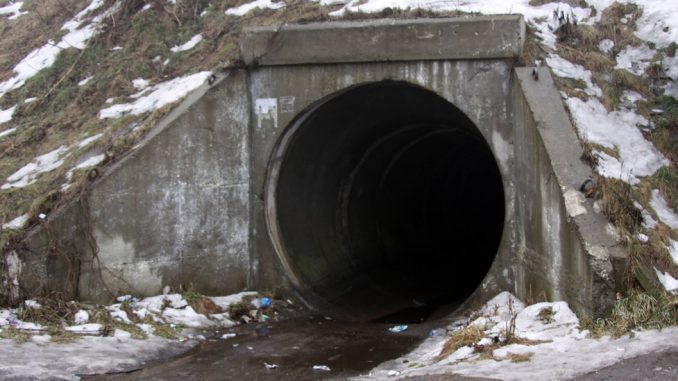
PCCP – or Prestressed Concrete Cylinder Pipe to use its full name – first burst onto the pipeline scene in North America in 1942, combining the compressive strength of concrete with the tensile strength of steel.
The durability of PCCP soon made it a popular pipe type for water and wastewater networks, particularly across the United States and Canada in the 1970s where it was installed for high capacity, high pressure waterlines.
According to the American Concrete Pressure Pipe Association (ACPPA), 90 of the 100 largest water utility companies in the US use prestressed concrete cylinder pipe on their networks.
Here is everything you could need to know about PCCP.
What is PCCP?
PCCP consists of a concrete core, a thin steel cylinder, high tensile prestressing steel wires and a mortar outside coating.
The concrete core is the main structural load-bearing component. The steel cylinder sits in-between two layers of concrete, where it acts as a water barrier.
Above the top layer of concrete are the pre-stressing wires which produce a uniform compressive pressure in the core, offsetting the tensile stresses in the pipe.
Finally, the mortar coating protects the wires from physical damage and external corrosion.
What standards govern PCCP?
The design and manufacturing standards of PCCP have evolved over the past 70 years. The first standard was approved by the American Water Works Association (AWWA) in 1949 with multiple revisions made since.
In terms of the design of PCCP, changes have not always been successful. When PCCP was first introduced, a high factor of safety was used as engineers played it conservatively given their lack of knowledge about the new composite.
By the time the 1970s arrived, PCCP manufacturers felt confident enough to start changing the structural design in an attempt to reduce costs.
Advances in science meant that stronger prestressing wire could be produced, leading to a reduction in both the number and the thickness of the wires used in PCCP.
This turned out to be a bad decision as by the 1990s, prestressed concrete cylinder pipe from the 1970s began experiencing a high rate of premature failures.
The new prestressing wires may have been made of stronger steel, but their lack of thickness left them more brittle and susceptible to corrosion, leading to ruptures long before the supposed 70 year lifespan of PCCP.
These failures did at least mean that PCCP standards had to be driven up. The ACPPA led the changes and by 2012, the overall failure rate of PCCP was less than four percent according to studies.
What are the benefits of PCCP?
Prestressed Concrete Cylinder Pipe is hard-wearing and resistant to physical damage. It can handle high internal pressures and extreme external loading, making it suitable for installation buried underground.
With the metal involved in PCCP surrounded by protective concrete and mortar, there is little chance of corrosion occurring.
PCCP can be easily used to create pipelines of huge diameters up to 3.6 metres and it represents one of the most economical options when it comes to infrastructure of that size.
What are the negatives of PCCP?
The overriding problem with PCCP is that when it fails, it causes severe problems. The size of a prestressed concrete cylinder pipe means that ruptures can lose millions of litres of water and leave hundreds of thousands of people without supplies.
One such incident took place in Southern California in 1999. A PCCP water main burst on the outskirts of the city of Irvine, spilling 22 million litres and cutting off water to over 700,000 residents for more than a week.
In response to that catastrophe, the water company responsible for supplying Irvine carried out an inspection of the PCCP on their network.
This identified 100 miles worth of pipeline that needed to undergo PCCP repair or reinforcement over the next 20 years at an estimated cost of $2.5 billion.
The future of PCCP
The US has a serious problem thanks to the below-specification PCCP used throughout the 1970s. Nationwide repairs and reinforcements could cost more than $40 billion according to a technical assessment carried out by the U.S. Environmental Protection Agency and the American Water Works Association.
This has led many to question the future of PCCP. To do so based on the mistakes in composition made in the 1970s though would be a mistake.
When correctly manufactured – as modern-day standards demand – PCCP provides a cost-effective, easy-to-install and long lasting pipe type which is reliable and hard wearing.
Advances in pipe repair also mean that it is easier to both repair and reinforce PCCP using solutions such as epoxies and composite repair wraps.

Leave a Reply